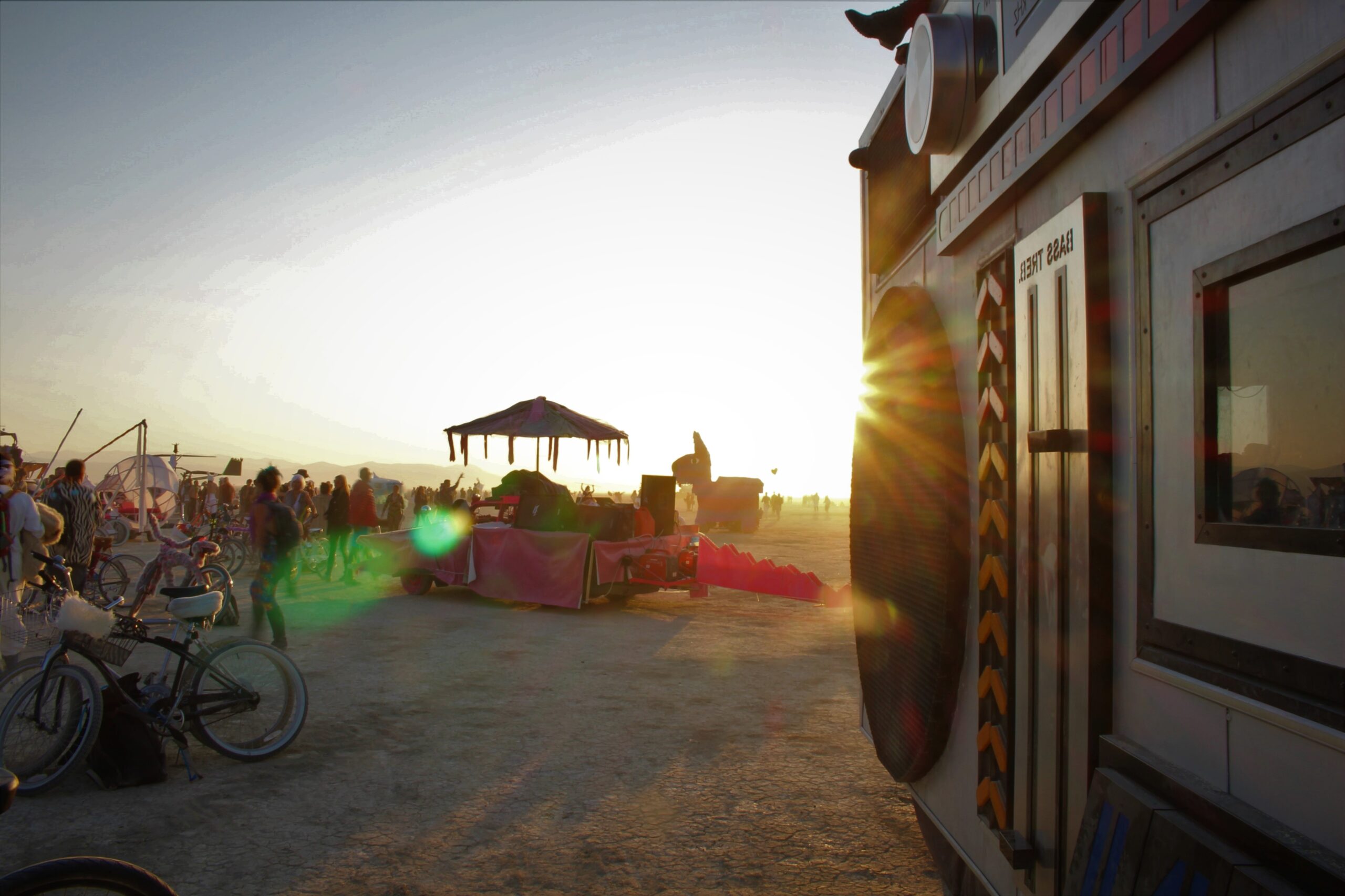Transformative experiences – natural and designed
Humans are known to naturally evolve over the course of a lifetime, and memorable and long-lasting experiences can have a profound effect on these transitions. Little is known, however, to what extent the environment and physical space of an experience aids in contributing to human transformation.
Burning Man – a space-time vehicle for transformation
By bridging the disciplines of marketing, psychology, data science, and experience design, a new field has emerged around the topic designing transformative experience. Our latest study, published in Annals of Tourism Research examined the process of how transformation unfolds before, during and after the 2019 Burning Man festival by means of analysing attendees’ experiences shared on Instagram.
Burning Man is often considered one of the most recognised transformative festivals in the world, bringing together tens of thousands of people to this yearly event in Nevada, USA. In fact, the Burning Man festival describes itself as a temporary ‘city’ (Black Rock City), inviting its attendees to enter the environment in order to make contributions, celebrate, reflect, meditate, and introspect, and ultimately transform.
While the importance of social, emotional, and behaviourral benefits of attending such events has been investigated quite prominently, viewing the physical environment and the intentional design of festivals as potential vehicles for fostering human transformation has only recently started to receive attention (see e.g., Neuhofer et al., 2020). Our study used a lens of environmental psychology and assessed the socio-physical triggers of transformative experiences at Burning Man.
Social media big data to study transformation
When it comes to conducting research on events and festivals, social media, and Instagram in particular, tend to play a major role. Festivals publicised several months in advance in order to build anticipation and connect attendees. Social media also allows festivalgoers to reflect on their own personal experiences and share their memories and feelings with others. As a result, the digital footprint of festivals extend the physical experience space. It adds a digital aspect to the lived moments.
To understand what makes Burning Man transformational, Instagram posts with the hashtag #burningman2019 were selected and tokenized in the software Python. Transformation is an ongoing process and we did a comprehensive analysis of more than 35,802 Instagram posts before, during and after the event. We conducted a deep topological analysis (DTA), using the DataRefiner tool, with a qualitative text analysis to shed light on individuals’ narratives of how a transformative experience is triggered.
What makes Burning Man a transformative experience?
The findings identified 30 different clusters, which can be divided into two main dimensions: 1) the outer socio-environmental sphere and 2) the inner socio-psychological sphere.

The environmental analysis shows that the space can create the conditions that are conducive for transformation. Several interconnected environmental aspects can be noted, such as ‘art and interactive building’, ‘festival area and Black Rock City’, ‘outfit and design’, ‘sunrise’, ‘art and installations’, ‘temple burn and party’, and ‘music and art’.
The socio-psychological perspective shows emotional themes around topic clusters, such as ‘gratitude and amazement’, ‘thoughts about life’, ‘unexpected change’, ‘radical self-expression and soul’, and ‘reflection on time and space (ineffable)’.
All in all, the study shows that transformation happens in an interplay between attendees and the physical setting of the festival. Understanding which factors that can give rise to transformation enables experience designers and event designers around the world to consciously make design choices that bring the intended transformative effects.
Festivals are a liminal space, away from the ordinary life. They offer wonderful time-space vehicles to explore different states of the self and altered states of consciousness. They can serve as a playful and safe environment to experience physical, psychological, social, and spiritual transformation and become a more authentic version of oneself.
For more information about the study, visit:
To cite this article:
